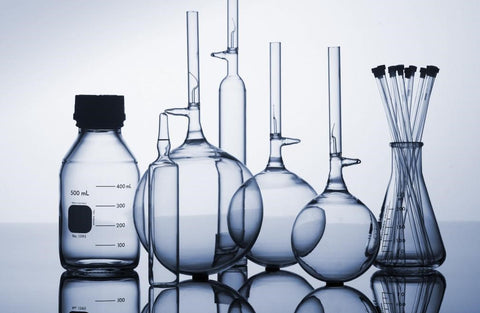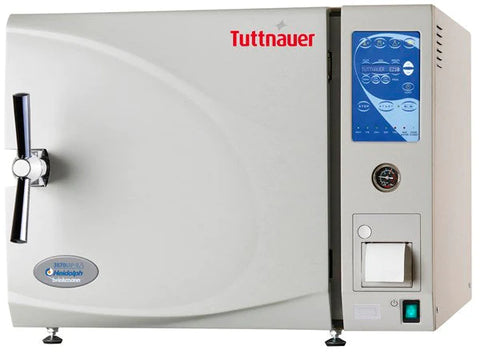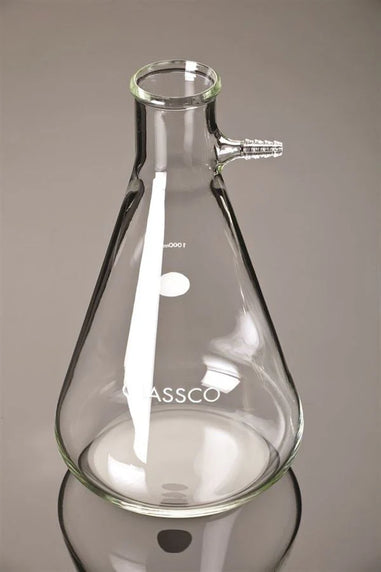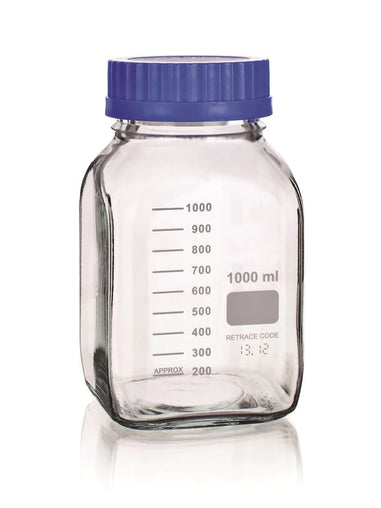- No products in the cart.
Laboratory glassware is the backbone of scientific research and experimentation. Whether you're a seasoned scientist or a budding researcher, maintaining clean and sterile lab glassware is essential to ensuring accurate results and preventing contamination. In this comprehensive guide, we will walk you through the step-by-step process of cleaning and sterilizing your lab glassware effectively.
Why Clean and Sterilize Lab Glassware?
Before delving into the cleaning and sterilization process, it's important to understand why these steps are crucial in a laboratory setting:
1. Preventing Contamination
Contaminated glassware can introduce foreign substances into your experiments, leading to skewed results or even dangerous reactions. Proper cleaning and sterilization minimize the risk of contamination.
2. Ensuring Accuracy
Clean and sterile glassware helps ensure the precision and reliability of your experiments. Any residue or impurities left on the glassware can alter the outcomes of your tests.
3. Safety First
Many experiments involve hazardous materials. Properly cleaned and sterilized glassware reduces the likelihood of accidents, chemical reactions, or spills.
Step 1: Gather Your Supplies
Before you begin cleaning and sterilizing your lab glassware, ensure you have the following supplies on hand:
- Lab glassware: The items you need to clean and sterilize.
- Gloves: To protect your hands from chemical residues.
- Lab coat or protective clothing: To shield your body from potential splashes.
- Safety goggles: For eye protection.
- Detergent: A mild laboratory detergent or soap.
- Soft-bristle brush: For scrubbing stubborn residues.
- Distilled water: Used for rinsing.
- Acid bath (if necessary): For removing mineral deposits.
- Autoclave or sterilization equipment: To sterilize the glassware.
- Drying rack or oven: For drying the glassware.

Step 2: Preliminary Rinse
Start by giving your lab glassware a preliminary rinse with warm water. This will help remove any loose debris or residues.
Step 3: Disassemble if Necessary
If your glassware has removable parts such as stoppers, septa, or tubing, be sure to disassemble them. This allows for a thorough cleaning of all components.
Step 4: Cleaning
A. Hand Washing
- Fill a sink or basin with warm water and add a few drops of mild laboratory detergent or soap.
- Immerse the glassware in the soapy water and use a soft-bristle brush to gently scrub the inside and outside surfaces. Pay special attention to any stubborn residues.
- Rinse the glassware thoroughly with distilled water to remove all traces of detergent.
B. Acid Bath (if needed)
If your glassware has mineral deposits or stubborn residues that won't come off with regular cleaning, you may need to use an acid bath. Be cautious when working with acids and always wear appropriate protective gear:
- In a well-ventilated area, prepare a diluted acid solution (e.g., hydrochloric acid or sulfuric acid) as per your lab's safety protocols.
- Submerge the glassware in the acid bath and let it soak for a specified time, usually not more than 30 minutes.
- After soaking, carefully remove the glassware and rinse it thoroughly with distilled water to neutralize any remaining acid.
Step 5: Sterilization
Sterilizing lab glassware is essential to eliminate any microorganisms that may compromise your experiments. There are several methods for sterilization, but one of the most common is autoclaving:
- Load your cleaned glassware into autoclave-safe containers. Ensure there is enough space between items for steam to circulate.
- Add distilled water to the autoclave. The water provides steam for sterilization.
- Set the autoclave to the appropriate temperature and pressure for your lab's sterilization guidelines.
- Start the autoclave cycle. The sterilization process typically involves heating the glassware to around 121°C (250°F) at a pressure of 15 psi for a set amount of time, often 15-20 minutes.
- Allow the autoclave to cool and depressurize before opening it. Safety precautions are crucial when handling hot glassware.
- Remove the sterilized glassware and store it in a clean, dry environment until use.

Step 6: Drying and Storage
After sterilization, it's important to dry your glassware properly and store it in a way that maintains its sterility:
- Allow the glassware to air dry in a clean environment. Alternatively, you can use a drying rack or oven at a low temperature.
- Store the glassware in a designated area, away from potential contaminants. Use clean covers or wrap the glassware in clean, lint-free materials if needed.
Step 7: Regular Maintenance
To ensure the longevity of your lab glassware and the continued accuracy of your experiments, establish a routine maintenance schedule:
- Regularly inspect glassware for signs of wear, cracks, or defects.
- Replace any damaged or compromised glassware promptly.
- Repeat the cleaning and sterilization process as needed, especially after each use with hazardous materials.
Safety Precautions
When cleaning and sterilizing lab glassware, it is important to take the following safety precautions:
- Wear gloves and safety glasses to protect yourself from chemicals and sharp objects.
- Work in a well-ventilated area to avoid fumes from chemicals.
- Follow the manufacturer's instructions for using any chemicals or equipment.
Conclusion
Properly cleaning and sterilizing lab glassware is a fundamental aspect of maintaining a safe and effective laboratory environment. By following these steps and adhering to your lab's specific protocols, you can ensure that your glassware remains free of contaminants, provides accurate results, and contributes to the success of your research and experiments.
For over 40 years, Lab Pro Inc. has been committed to delivering highest quality lab chemicals, lab supplies, hand tools, lab equipment, reagents, glassware equipment, and cleanroom PPE apparel. Renowned by global medical device companies and laboratories, we ensure exceptional quality in every product. Contact us online or call 888-452-2776 to learn more. Discover top-notch lab supplies and elevate your experiments today!












































